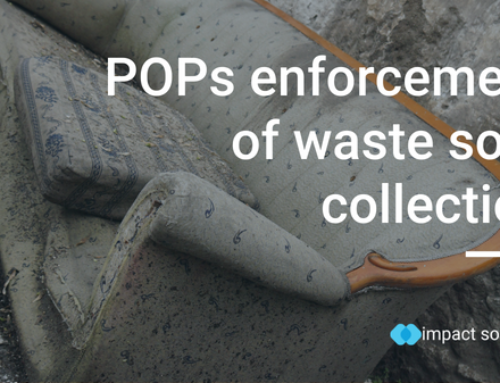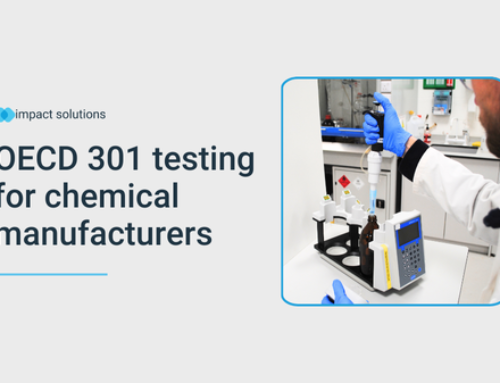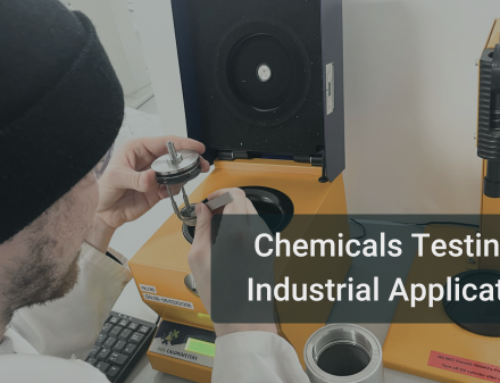As industries move towards more sustainable practices, understanding the energy potential of materials has never been more important. One analytical technique sits at the heart of waste-to-energy decision-making: bomb calorimetry testing. At Impact Solutions, bomb calorimetry plays a vital role in helping manufacturers, recyclers, and waste processors determine the best end-of-life route for their materials. Whether the goal is reuse, recycling, or energy recovery, knowing a material's calorific value is essential for making informed, data-driven choices.
Why Calorific Value Matters in the Circular Economy
The circular economy aims to minimise waste, maximise material reuse, and reduce reliance on virgin resources. However, not all materials can be mechanically or chemically recycled. Contamination, composite structures, or degraded polymers can make recycling impractical or uneconomical. In these cases, energy recovery becomes an important final step in keeping materials within a useful lifecycle.
This is where calorific value comes in. The calorific value of a material indicates how much energy it releases during controlled combustion. High-energy materials (such as many plastics) can serve as a valuable fuel source in waste-to-energy facilities. Conversely, materials with low calorific value may not be suitable for energy recovery and could require alternative disposal routes.
Bomb calorimetry provides the accurate, reliable data needed to make these distinctions.
How Bomb Calorimetry Supports Sustainable Waste Management
Bomb calorimetry works by burning a sample in a sealed, oxygen-rich chamber and measuring the resulting temperature rise. This measurement reveals the Calorific Value. These values are used across industries to:
Assess Suitability for Energy Recovery
Waste-to-energy plants rely on fuels that provide consistent, predictable energy outputs. If a waste stream includes materials with insufficient calorific value, the process becomes inefficient. Accurate calorimetry testing ensures waste processors can:
- Identify materials that contribute positively to fuel blends
- Remove low-energy contaminants
- Optimise energy production and reduce emissions
Improve Material Classification and Compliance
Many regulatory frameworks require calorific value data when classifying waste, especially when distinguishing between hazardous, non-hazardous, and energy-recovery-suitable streams. Impact Solutions supports clients with fast, accredited testing that helps fulfil environmental reporting and compliance obligations.
Support Circular Economy Decisions in Manufacturing
Manufacturers increasingly evaluate materials not only for performance but also for sustainability. By knowing the calorific value of production waste, offcuts, or end-of-life products, companies can:
- Benchmark sustainability performance
- Choose materials aligned with circular economy targets
- Reduce landfill reliance
Why Plastics Often Make Strong Waste-to-Energy Fuel
Polymers such as polyethylene (PE), polypropylene (PP), and polystyrene (PS) generally have high calorific values, often similar to fossil fuels. When these materials are unsuitable for recycling, energy recovery presents a beneficial alternative route. Bomb calorimetry testing allows organisations to understand:
- Which polymer streams offer high energy potential
- How additives and fillers affect calorific value
- The viability of mixed-polymer waste in fuel applications
This insight helps businesses maximise the sustainability value of materials that would otherwise be discarded.
Impact Solutions: Your Partner in Accurate Bomb Calorimetry Testing
Impact Solutions provides fast, precise, and accredited bomb calorimetry testing for businesses across the UK and beyond. With expertise in polymers and material performance, our team supports a wide range of sectors; including waste management, manufacturing, recycling, and energy production.
Our calorimetry services deliver:
- Accurate calorific values
- Clear, user-friendly reporting
- Expert guidance on interpreting results
- Support for compliance and environmental assessments
Whether you're optimising waste streams, improving sustainability reporting, or evaluating new materials, our laboratory provides the data you need to move forward confidently.
FAQs
What materials can be tested using bomb calorimetry?
Bomb calorimetry can be used on a wide range of solid and liquid materials, including plastics, biomass, fuels, textiles, composites, waste samples, and more. If it can be combusted under controlled conditions, it can typically be assessed for calorific value.
How long does bomb calorimetry testing take?
Turnaround times depend on sample quantity and testing requirements, but Impact Solutions offers flexible scheduling and can often provide rapid results to support urgent decision-making.
Ready to optimise your waste streams and improve sustainability performance?
Impact Solutions provides fast, accurate, and accredited bomb calorimetry testing to support waste-to-energy decisions, material classification, and circular economy strategies.
Get in touch with our expert team today to discuss your testing needs or request a quote.
Follow us on LinkedIn, Facebook and Instagram for more service updates and industry news.





